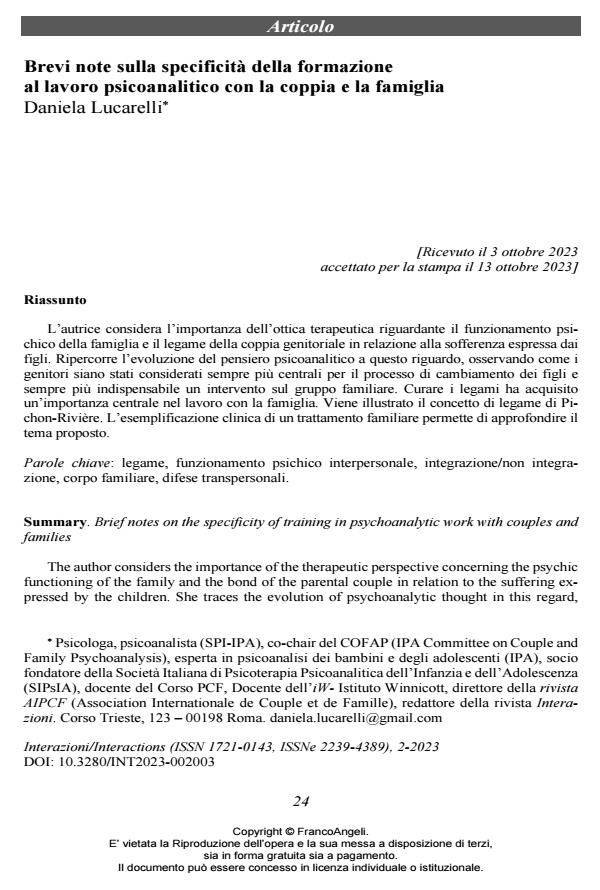Brief notes on the specificity of training in psychoanalytic work with couples and families
Journal title INTERAZIONI
Author/s Daniela Lucarelli
Publishing Year 2023 Issue 2023/2
Language Italian Pages 12 P. 24-35 File size 176 KB
DOI 10.3280/INT2023-002003
DOI is like a bar code for intellectual property: to have more infomation
click here
Below, you can see the article first page
If you want to buy this article in PDF format, you can do it, following the instructions to buy download credits

FrancoAngeli is member of Publishers International Linking Association, Inc (PILA), a not-for-profit association which run the CrossRef service enabling links to and from online scholarly content.
The author considers the importance of the therapeutic perspective concerning the psychic functioning of the family and the bond of the parental couple in relation to the suffering expressed by the children. She traces the evolution of psychoanalytic thought in this regard, observing how parents have been considered increasingly central to the process of change in children and how intervention in the family group has become in-creasingly indispensable. Caring for the links has gained central importance in working with the family. Pichon-Rivière’s concept of link is illustrated. The clinical exemplifica-tion of a family treatment allows the proposed theme to be explored in greater depth.
Keywords: link, interpersonal psychic functioning, integration/non-integration, family body, transpersonal defences.
Daniela Lucarelli, Brevi note sulla specificità della formazione al lavoro psicoanalitico con la coppia e la famiglia in "INTERAZIONI" 2/2023, pp 24-35, DOI: 10.3280/INT2023-002003